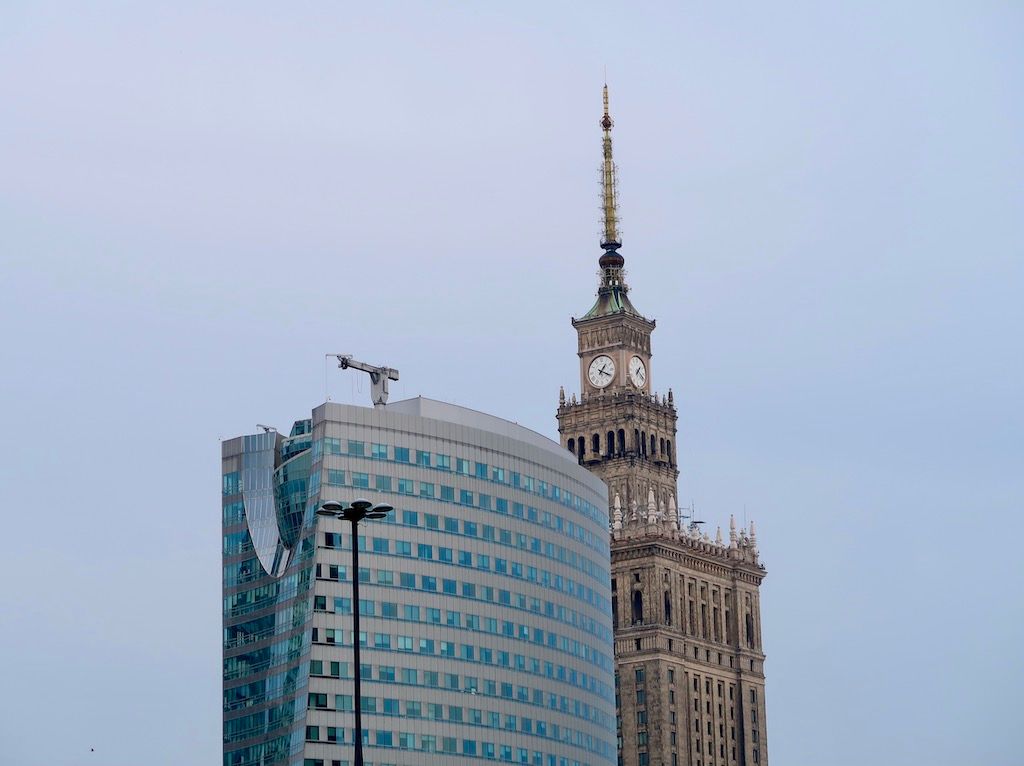The Palace of Culture and Science.
Poland
We crossed the German Polish border at Świnoujście without showing neither passport nor COVID certificates. The plan was to take a few days in the city, but it was crowded with tourists, and the campsite was fully booked. A woman at the tourist office said that after the pandemic and shutdowns, many people wanted to travel.
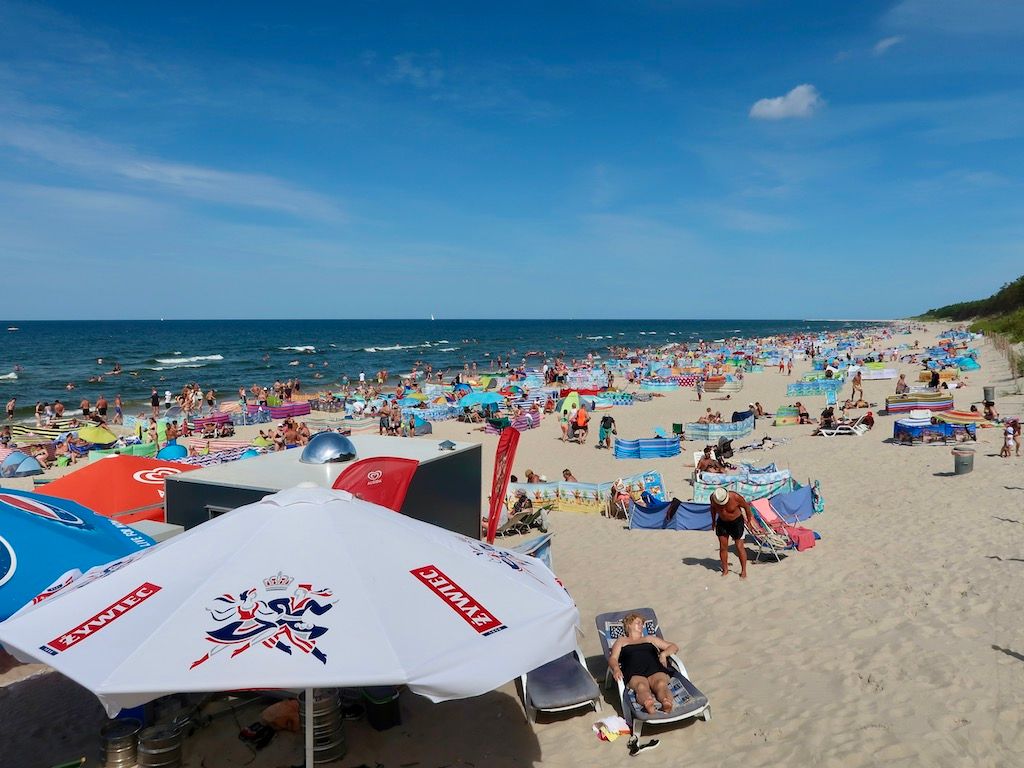
Helpfulness in Międzywodzie
We were turned away from a ferry for locals only, but found the right one from Usedom Island and followed the Baltic Coast to the resort town of Międzywodzie. On the beach lay sunbathers behind low canvas fences. We settled on a campsite with tall pine trees. Here, a helpful family gave our trip a good start with advice on Polish culture and camping life. They all waved when we continued east.
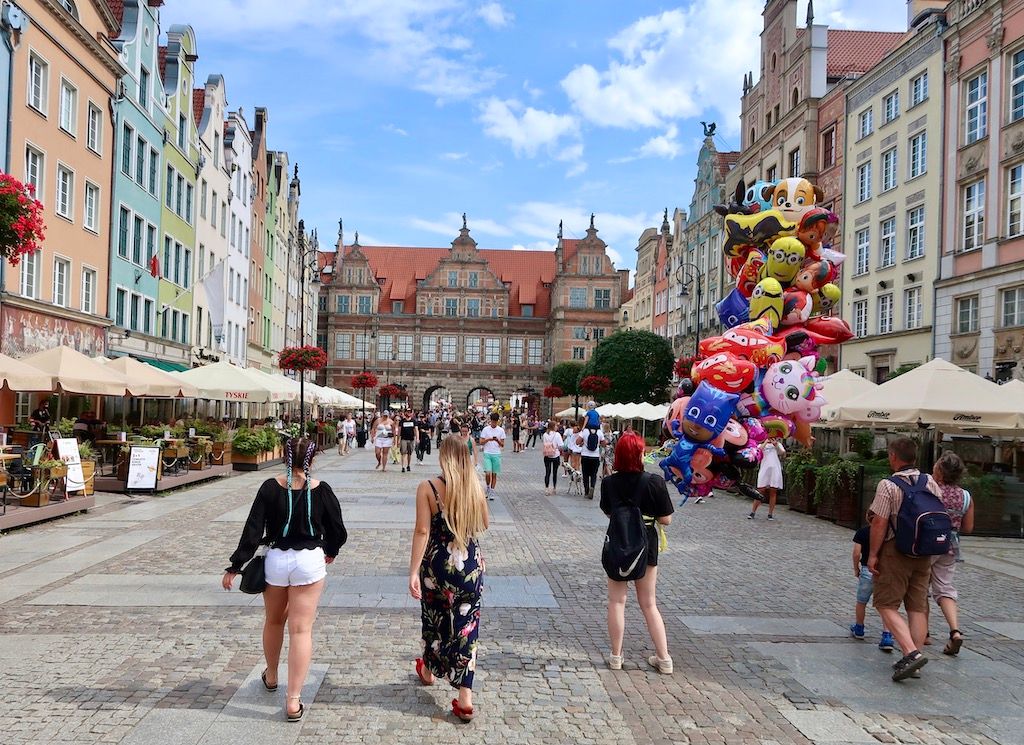
Solidarność in Gdansk
The Hanseatic city of Gdansk on the mouth of the Vistula River in the Baltic Sea spreads out from the harbour. In the Middle Ages, the Teutonic Order ruled the city, from the end of the 18th century it was at times under Prussian and German rule, in the interwar period it was designated the Free City of Danzig under the League of Nations, after World War II it lay in ruins and was respectfully rebuilt. In the 1980s, the trade union Solidarność emerged in the shipyard led by the later Polish President Lech Wałęsa. History contributes to Gdansk's present cultured, cosmopolitan atmosphere.
We visited European Solidarity Centre, that tells about the peaceful struggles for trade unions, democracy and human rights, as starting point of the fall of communism in the Eastern Bloc. The newly built corten steel premises are located next to the shipyard area, which now houses shipbuilding as well as creative cultural institutions and cafés. Museum of the Second World War conveys dreadful war history with a focus on Poland and a view of the world in an elegantly sloping house. Hanne found a finger ring with timeless design in one of the many shops that maintain and renew the tradition of amber crafts.
A stop in the coastal town of Sopot with a very long pier, Art Nouveau houses and luxurious hotels gave the impression of wealthy Poles' holiday habits past and present. On our way, further east we met the only stork family we saw, maybe the big birds had begun their journey towards warmer countries.
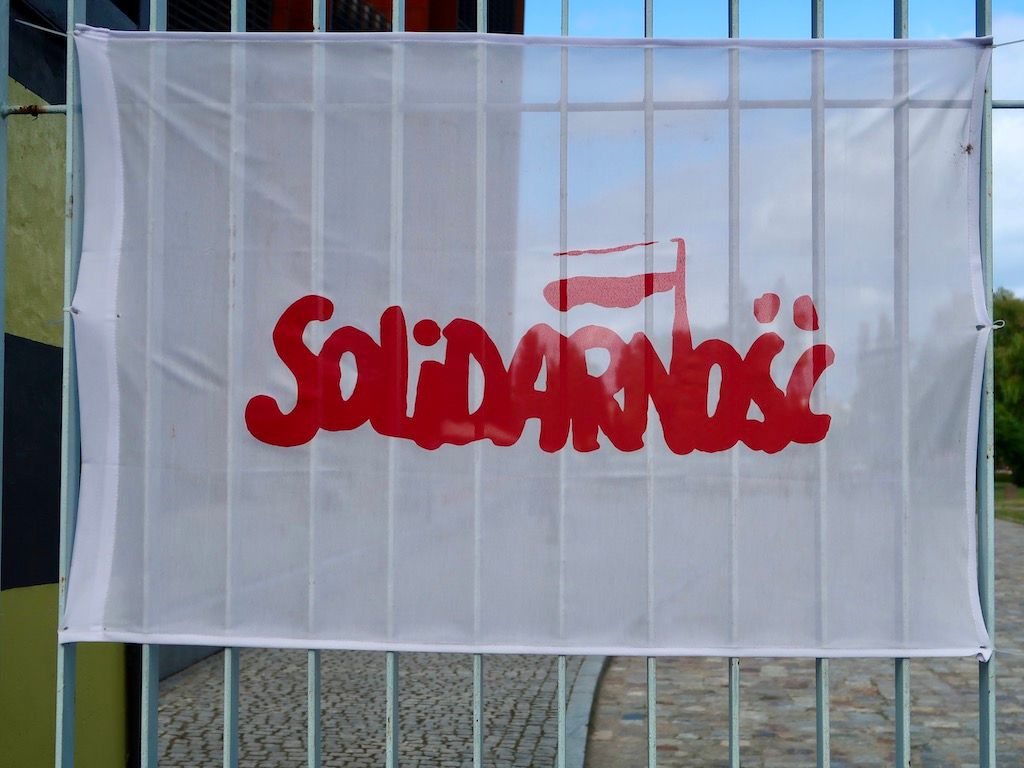
Crusaders in Malbork
The next stop was the crusader castle Malbork. The mighty building founded in the late 13th century, was the headquarters of the Teutonic Order for 150 years and since the residence of Polish kings for more than 300 years. It was damaged during World War II and rebuilt after the war. Now it is surrounded by markets with local food, medieval clothing and toy weapons. One can also be photographed with falconers and their birds. The dramatic story is told by a good audio guide, the weapons collection and the amber museum are in themselves worth a visit.
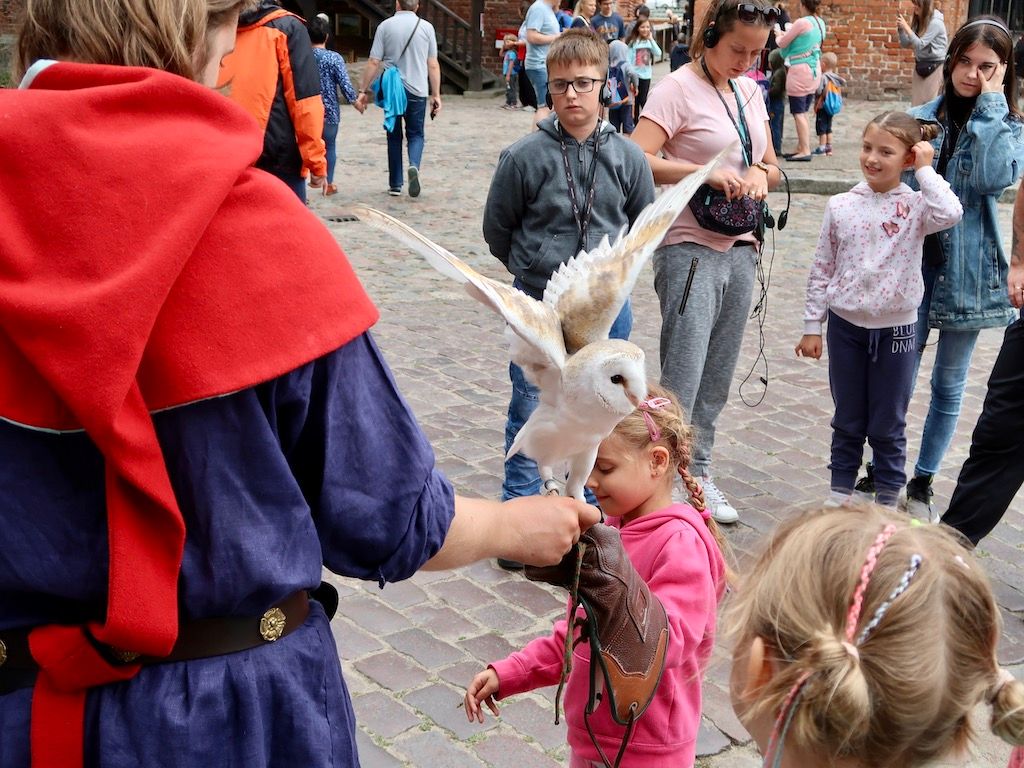
Adolf Hitler in the Wolf’s Lair
Wolf’s Lair was Adolf Hitler's preferred headquarters during World War II. The Germans blew up the buildings as they withdrew at the end of the war, but one can still see the remains of thick, moss-covered bunker walls in a forest near the town of Kętrzyn. Colonel Claus von Stauffenberg's failed assassination attempt on Hitler in 1944 is described in detail. Military hardware and soldiers in historical uniforms contributed to the realism.
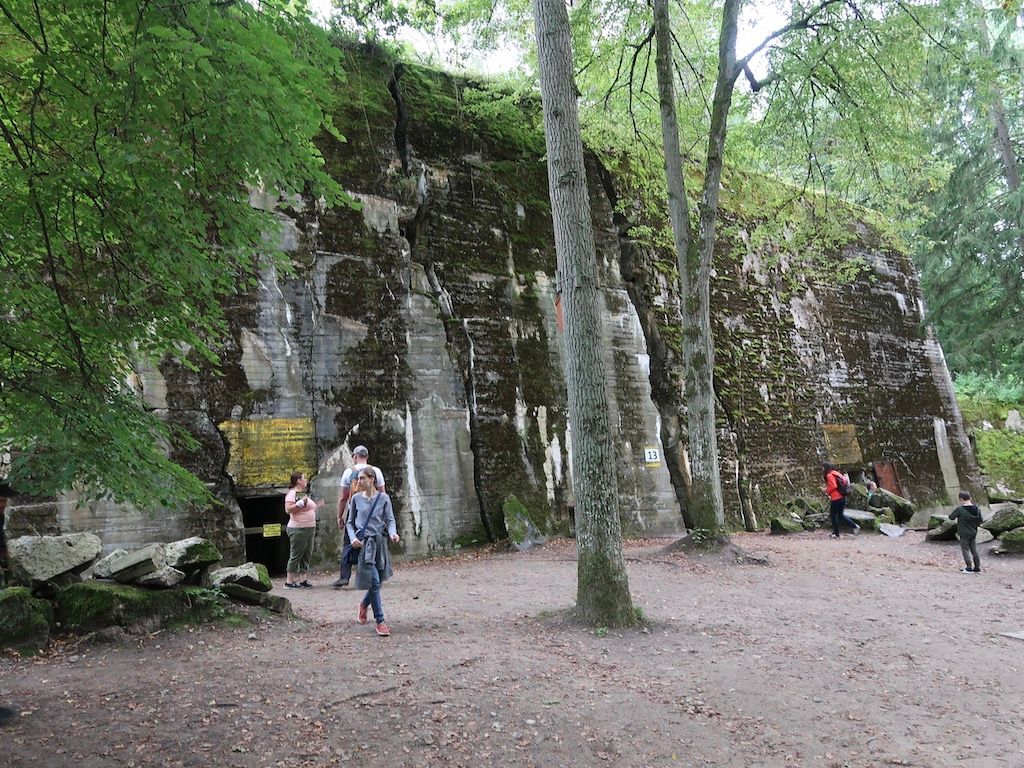
Kayaking in Giżycko
We remembered peaceful kayak trips in beautiful nature on the Masurian Lakes. Giżycko is located by a canal with a swing bridge, where small and large boats pass between two lakes. When we arrived on a Saturday night, there was partying and loud techno music on the beach. In the morning, we woke up to beautiful, polyphonic songs from Mass in a Catholic church. In the afternoon, Sunday-dressed families strolled the main street with closed shops. We experienced the same weekend rituals many places in Poland. We found tranquil nature a little outside the town in rented kayaks.
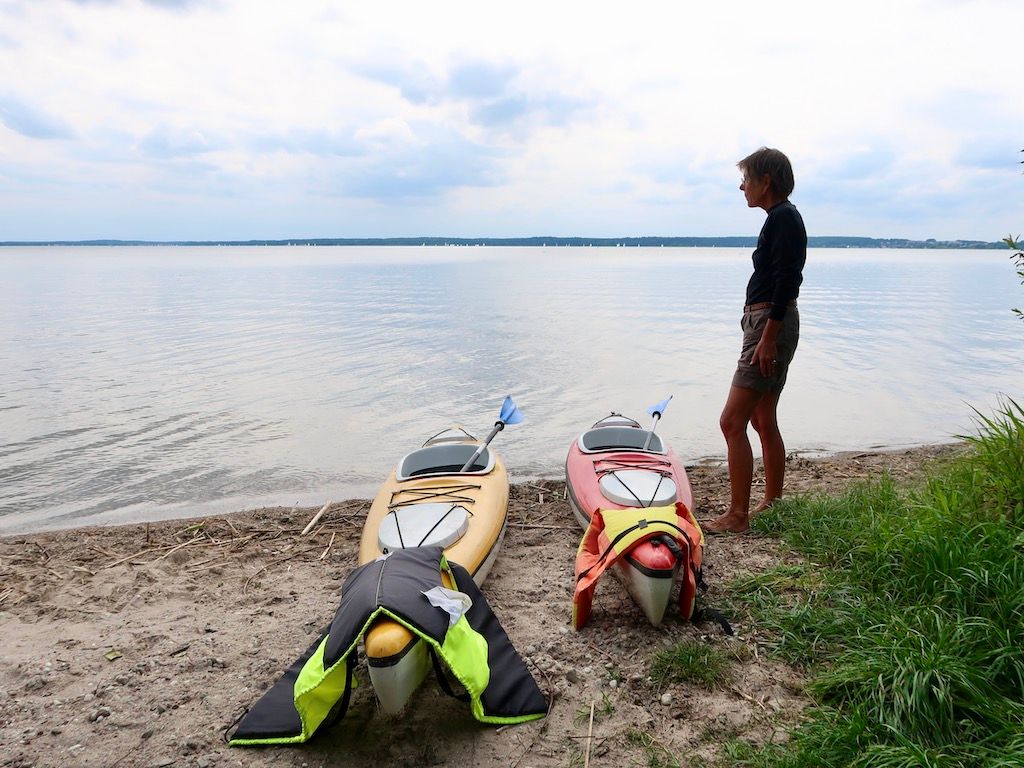
Capitalist dynamics in Warsaw
When we arrived in Warsaw, we could scarcely recognize Poland's green capital, where we had spent a week in 1993. The transition from communist command economy to capitalist market economy has left its unmistakable traces in many places. The city's landmark the Palace of Culture and Science is now surrounded by high-rise buildings in glass, steel and concrete. The Palace is a gift from Joseph Stalin of the Soviet Union that evokes mixed feelings. It is huge and houses many businesses, offices and cultural institutions, but it is not beautiful. We took the elevator to the 30th floor and got an overview of the urban development.
On the market square in the old town, which was completely destroyed during World War II, the houses have been rebuilt with colourful, ornamented Renaissance facades. The inspiration was found in works by Bernardo Bellotto from the late 18th century. An elegant organ grinder with a straw hat completed the scenery. We also saw the Royal Castle, the Royal Route, the Presidential Palace, the University, the Tomb of the Unknown Soldier and fine shops.
On rainy days, we visited some of Warsaw's museums. The newly built POLIN Museum of the History of Polish Jews tells the story of Poland's Jewish population through 1000 years using interactive media. It casts light on periods of tolerance and prosperity as well as the Nazis' Holocaust and the anti-Semitism of the Communists. Present day Jews talk about their dual identity as Polish Jews in videos. Afterwards we visited the Umschlagplatz Monument, which marks the place where Jews were gathered and taken to the Treblinka extermination camp in cattle wagons.
The Warsaw Rising Museum tells the story of the citizens' fatal and futile struggle against the Nazis in 1944. It rehabilitates the branches of the resistance movement, which during communism were considered illegitimate. National, conservative and catholic values characterize the museum, which houses a chapel dedicated to a Catholic priest who participated in the uprising. At the end of the exhibition guests meet the question, "What would you have done?"
After visiting the museum, we had a cup of coffee at the nearby Danish-inspired restaurant Hygge2. A friendly woman helped us translate an explanation of the Danish word “hygge” (cosiness) that hung on the wall.
Praga is a district east of the Vistula, which was not destroyed during the war but occupied by the Red Army. The influx of the creative class has fostered new dynamism in the old working-class neighbourhood. We visited Soho-Factory and met an architect who had returned home after eight years abroad. She was busy with jobs related to the transformation of Praga and the renewal of the capital.
During our visit in Warsaw, Mira told us about her life and work as a university professor and a member of organisations that spread knowledge about Alzheimer's disease. See Mira.
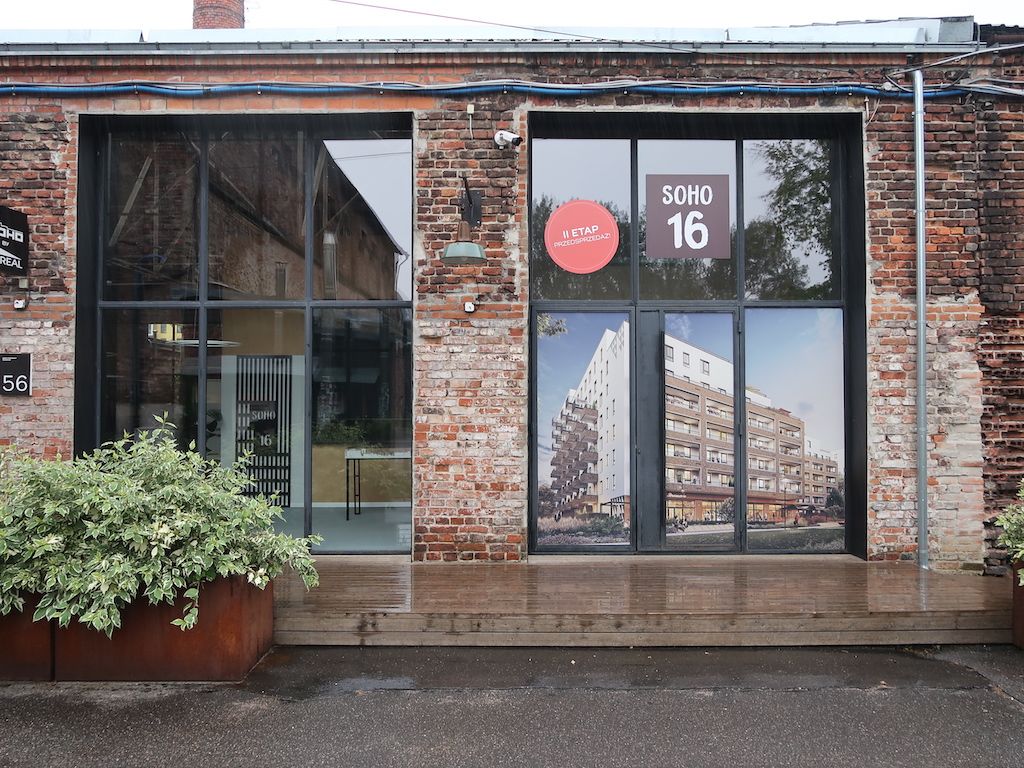
Traditional culture in Kraków
Kraków was the capital of Poland before Warsaw took over in 1596. While Warsaw has a commercial and political vibe, the university and royal city of Kraków seems to be more scholarly and cultural. The city came undamaged through World War II, and in the year 2000 it had the title of European Capital of Culture. The large, medieval market square Rynek Główny is surrounded by stately religious and secular buildings, the old Cloth Hall today house stalls with an appeal to tourists.
At MOCAK Museum of Contemporary Art we saw high-quality Polish and international artworks. Of course, we noticed Danish Bjørn Nørgaard's "Recycling Art" with Venus de Milo in a waste container. The Art Museum is located in the production section of Oscar Schindler's factory, depicted in Steven Spielberg's 1993 film "Schindler's List".
At Plac Bohaterów Getta an installation of oversized chairs marks the site where the ghetto's Jews were gathered and sent to death. A woman at the Temple Synagogue said that today there are only 200 Jews left in Kazimierz, which used to be a thriving Jewish community. Now trendy cafes and shops dominate.
Wawel Castle, which rises above the city on a cliff top, is Poland's answer to Greece’s Acropolis and Denmark's Jelling. Stone Age finds have been made on the rock, and throughout history it has had significant royal and religious functions. The large renaissance complex is now a museum. Visitors choose from a variety of routes through the castle. We spent a day there without seeing everything, but got an impression both of the tremendous cultural treasures and of their national significance.
The communist city of Nowa Huta was founded in 1949 and built by young, unemployed men from the countryside around a steel mill that, according to locals, still operates for reduced power. The intention was to create a counter image to conservative Kraków based on ideals of socialist realism. Our visit started on what, with the irony of history, is called Ronald Reagan Central Square.
Museum of Poland Under Communist Regime in a former cinema told stories from the past. For instance, the tale of a Lenin statue, which was removed in 1989 after workers' protests. It was later sold to a wealthy Swede. In the museum's basement, there is a shelter made to protect against the nuclear threat of the Cold War. Sunday strolling families said they were glad to live in attractive apartments in a city with wide boulevards, green areas and fine cultural institutions.

Salt production in Wieliczka
The Wieliczka Salt Mine is located near Kraków in a place where salt has been produced for millennia. In the beginning the precious mineral was vaporized from springs on the surface, mining underground began in the Middle Ages. A guide whose family had been miners for generations led us through shafts and passages to breath taking chapels and beautiful lakes. The state-owned mine has created great wealth, and it is richly decorated with statues in salt stone of famous visitors such as the astronomer Nicolaus Copernicus, the poet Johann Wolfgang von Goethe and the Pope John Paul II. According to our guide, salt is still produced in the mine, other sources say that production has stopped.
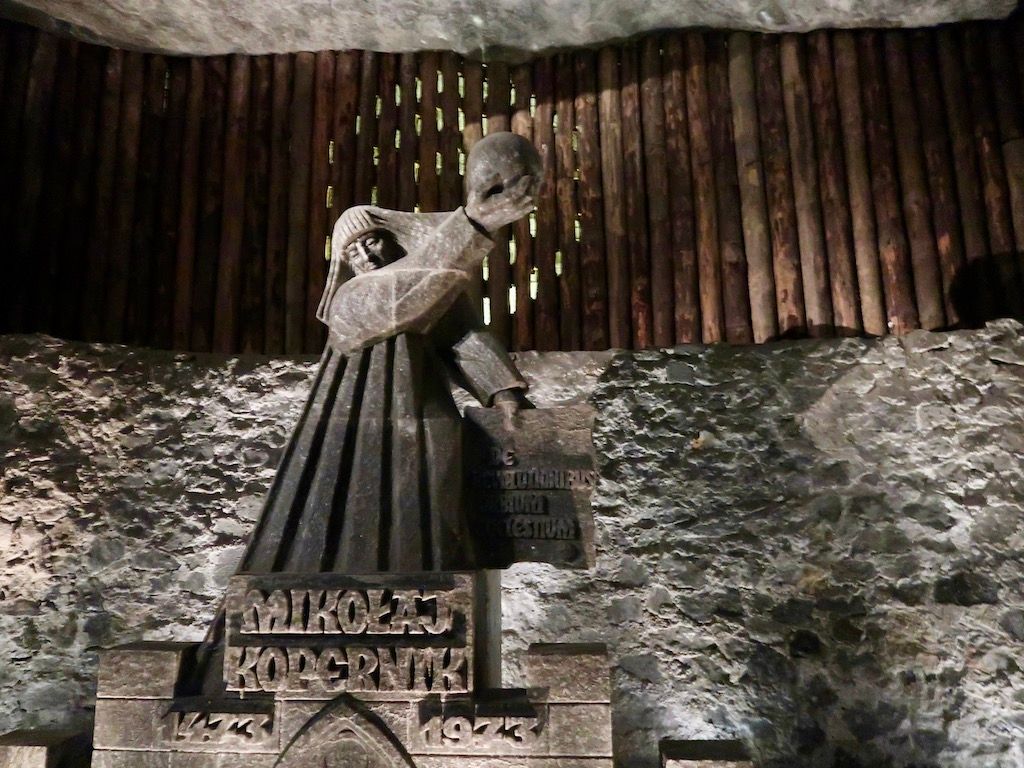
Hiking in Zakopane
Zakopane in the Tatra Mountains on the border between Poland and Slovakia became the home of a creative artist colony in the decades around the turn of the last century. Politically Poland was divided between great powers, and the region belonged to Austria-Hungary. In the contact between the mountain dwellers and the settlers, notions of a specific Polish culture and identity were born. A visit to the recently restored museum Villa Koliba, gave an impression of the first wooden house in the ornate style, which was developed in the 1890s and still characterizes the city.
Today's Zakopane is an attractive hiking and skiing city. In shops and markets, we found mountain boots, leather bags, wooden toys and local food at affordable prices. We walked some of the easy routes that others took on horse-drawn carriages with coachmen in traditional costumes. The most beautiful was the tour to the jade green mountain lake Morskie Oko. The top of Gubałówka gives a nice view of the town, we reached it by cable car. Photographs taken by our Polish camping neighbours showed that bolder mountaineers than us found terrific nature experiences on the peaks.
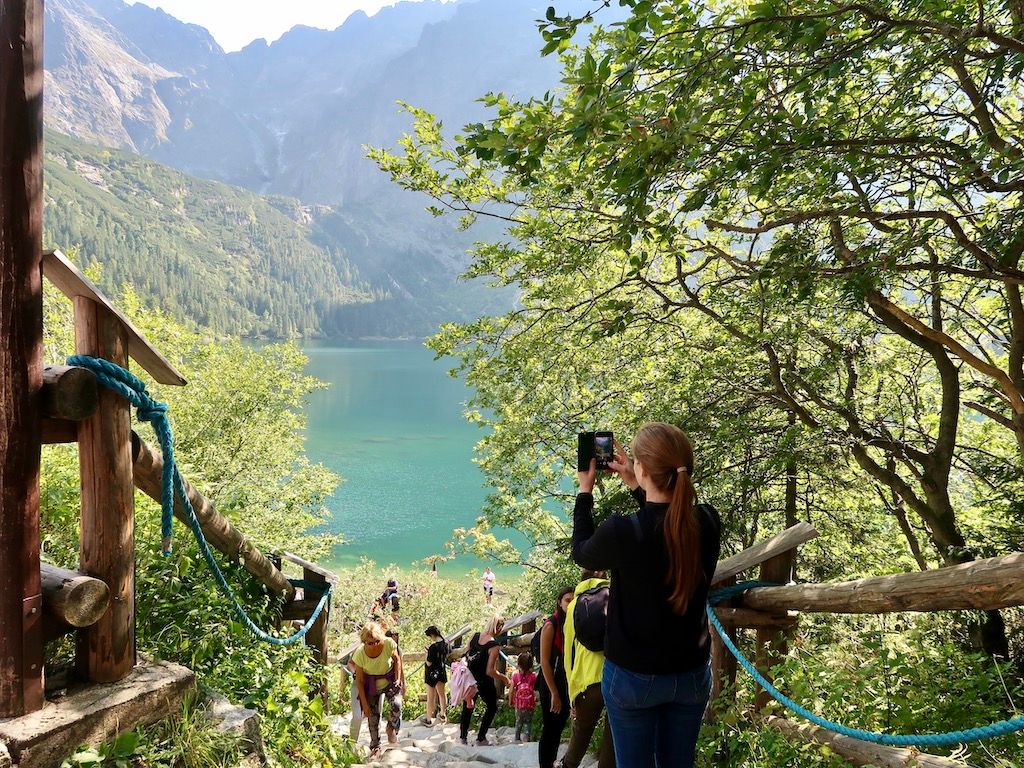
Mass murder in Auschwitz-Birkenau
Auschwitz-Birkenau is a dark reminder of Holocaust. A well-informed guide told the story, which began at the gate with the German inscription, "Arbeit macht frei." It ended at the memorial to the victims with the same message in many languages, "Forever let this place be a cry of despair and a warning to humanity, where the Nazis murdered about one and a half million men, women, and children, mainly Jews from various countries of Europe. Auschwitz-Birkenau 1940-1945. "
We stayed with people from several nations on a campsite run by the Catholic Centre for Dialogue and Prayer in Oświęcim. The Centre commemorates the victims and contributes to creating mutual respect, reconciliation and peace in the world. A young German woman's comment on her visit to the concentration camps was, "I am speechless, it is important that everybody gets this experience."
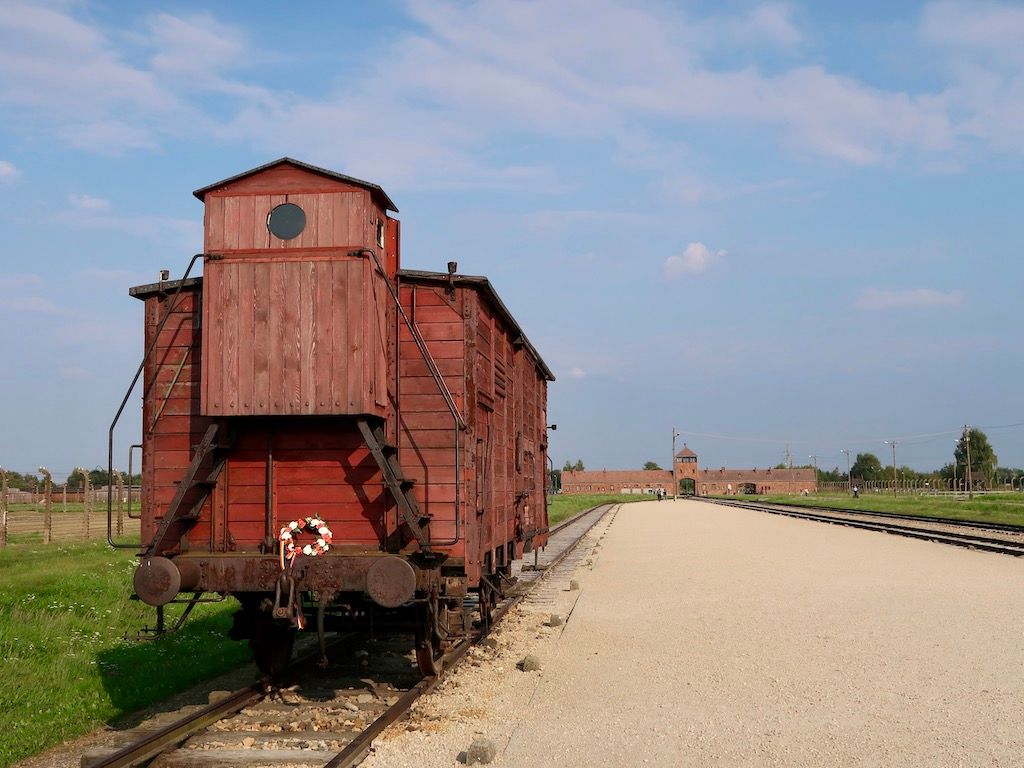
The Madonna in Czestochowa
We experienced Jasna Góra’s Black Madonna in the town of Częstochowa with many pilgrims and tourists at a Catholic Mass rich on rituals. It ended by letting the congregation walk or move on their knees behind the icon. The miraculous properties of the image are illustrated by crutches and other aids for disabled left behind.
The history of the monastery, which was established in the late 14th century, is told in several museums on the site. Here we also got an impression of Catholicism and the significance of the Catholic Church for Polish culture and politics. Lech Wałęsa’s Nobel Prize is on display as a thank for support to Solidarność.
A pregnant woman who visited the Madonna with her daughter explained, “The Virgin Mary is our mother and it is important to honour her. She helps me be a good mother." The woman also said that some young people are critical of clergymen who think too much about money, but the church arranges good activities for young people.
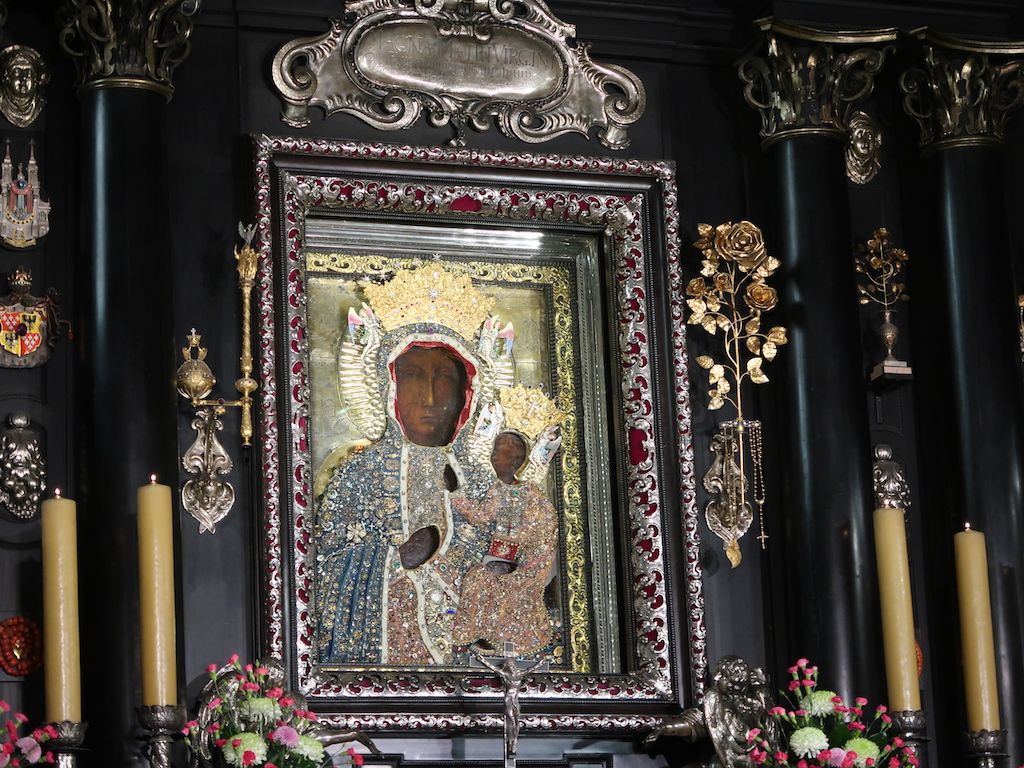
Architecture in Wrocław
On the way to Wrocław we passed some of Poland’s modern factories. Before World War II, the city was German and called Breslau. During the war, it was destroyed by the Red Army. After the war, surviving German inhabitants moved to the west, and new ones from former Polish territories in the east took over.
Wrocław was the European Capital of Culture in 2016. The city's history can be seen in many fine buildings. The two central marketplaces offer a medieval town hall and facades in the styles of several eras. The main railway station is a Neo-Gothic building from 1857. Renoma department store is a modernist building from 1930. Bogusławskiego Street makes use of arches under the railway for cafés, shops, etc. The District of Four Temples signals tolerance with shrines for four denominations within a few hundred meters.
University of Wrocław was built by Jesuits in 1670. When the German professors left, they were replaced by Polish colleagues from Lwów in present-day Ukraine. The story is told in a museum. The Aula Leopoldina'srestored baroque interior and paintings are impressive.
The Cathedral Island is the oldest district with cobbled streets and beautiful buildings. In front of St. John the Baptist’s Gothic Cathedral, we saw several bridal couples and priests. At a railing facing the river Oder, a lesbian punk couple sealed their love with a padlock and a kiss. In cities, we regularly saw rainbow flags, but only rarely caresses between people of the same sex. The introduction of LGBT-free zones in Poland led to criticism from the EU, and some of them were abolished.
Centennial Hall is a mighty concrete dome by the architect Max Berg from 1913. It is suited for exhibitions, sports, culture etc. The hall is part of a complex of buildings and parks. In front of it stands an enormous metal spire. Behind it is a pond with illuminated fountains and a pergola, which is a nice scene for bridal photos. The history of the building is told in an information centre that invites on a tour in virtual reality.
Dwarves are everywhere in Wrocław. It started with a dissident in the 1980s painting little people, in places where the authorities had erased critical graffiti with white paint. Now it is a tourist game to find and photograph the many statuettes created by a local artist.
Restaurant Konspira's guests enjoy their meal in a nostalgic setting from the 1980s - political posters, a military vehicle and the interior of an apartment as they looked at the time. Outside, a dwarf statuette agitates for Solidarność. In the gallery Polish Poster Gallery, we learnt that poster artists are still productive and creative in Poland.
During the visit to Wrocław, we spoke with Anna. Her Jewish parents fled to a Scandinavian country, where she grew up, after studying law she emigrated to Poland to work as a lawyer. See Anna.
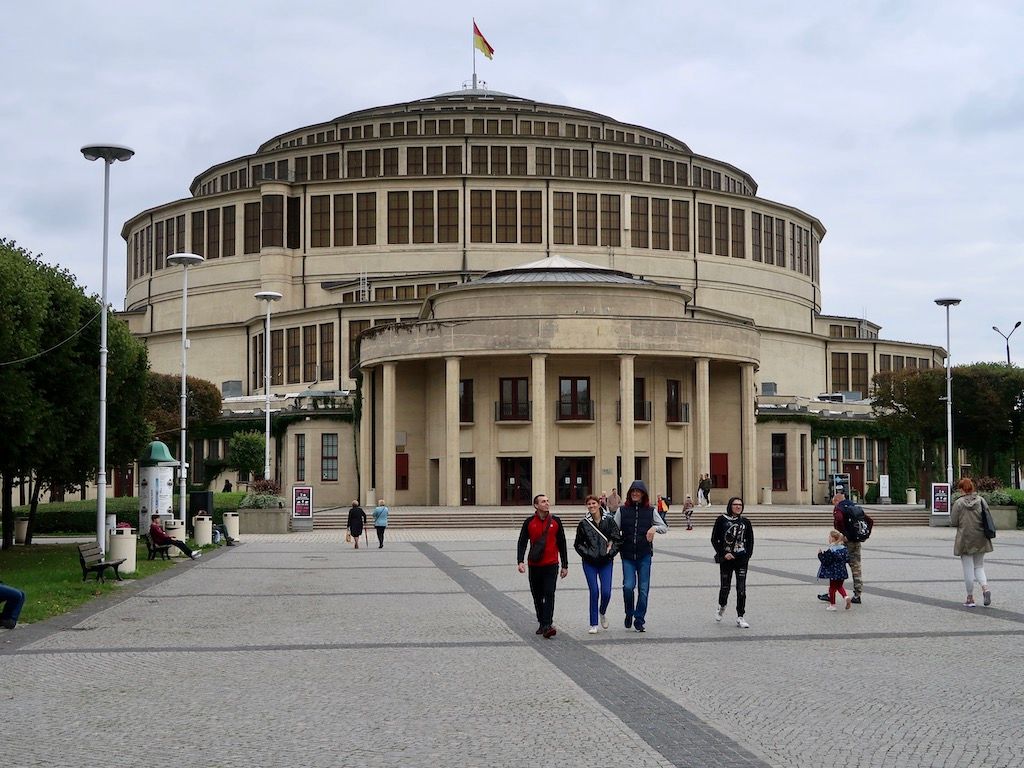
Medieval remains in Toruń
Toruń is a well-preserved medieval town, which was a prosperous Hanseatic city on the Vistula. The river was previously navigable for seagoing ships. We only saw small vessels and a competition where teams ran with their boats through the city and out through a city gate to row before they breathless took the trip in the opposite direction.
We met many groups of tourists or school children on tours of the fine houses, churches, city gates and castle ruins. They were often accompanied by guides in medieval costumes. In front of the City Hall you find a statue of the astronomer Nicolaus Copernicus, whose book from 1543 changed the understanding of the solar system so that the sun and not the earth was its centre. While we were in the city, a group of young people held a climate demonstration at Nicolaus, which is a favourite gathering and meeting point. We also visited the university that bears the name of the Renaissance scholar and the museum, which is located in his family's home.
Explorers’ Museum tells about the travels of the globetrotter, photographer, filmmaker and author Tony Halikand and his two wives. It is a little gem with fine photographs and objects. The geographical range of many tours is illustrated by a world map with attached hotel keys. A Miao woman's blue suit reminded us of the visit in Vietnam 1996, which was the start of our shared travel life and marriage.
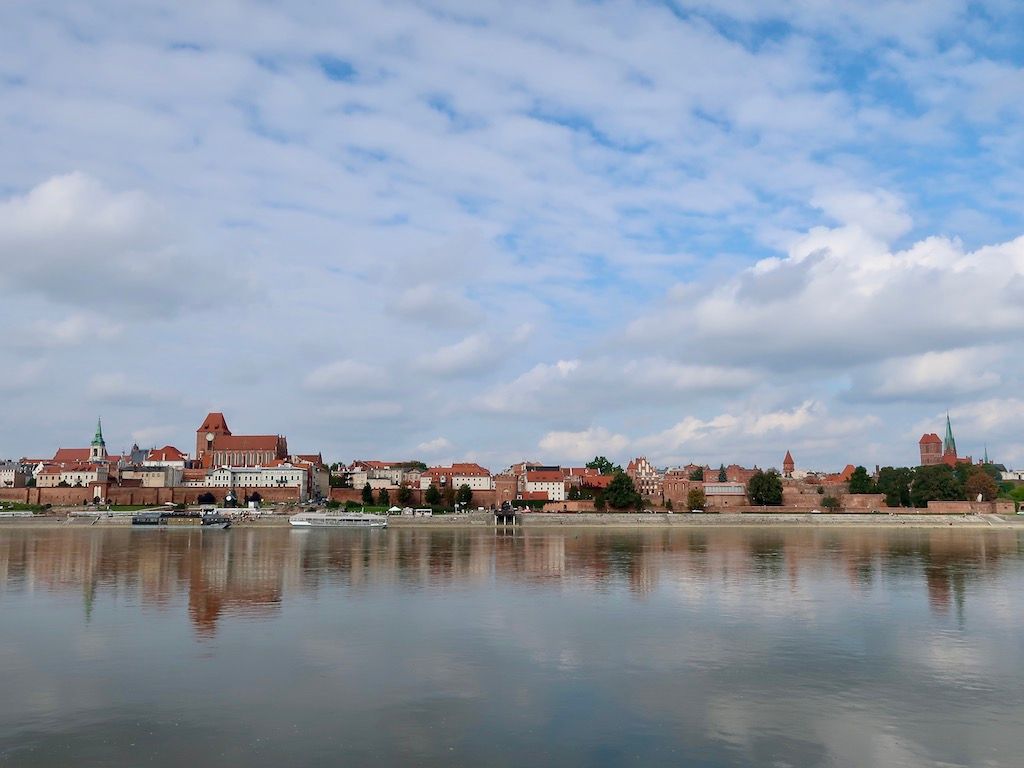
The city gate in Łagów
Our tour of Poland ended in Łagów. The holiday town between two lakes near the German border was closing down for the winter, and the water bikes lay unused by their bridges. We found the city gate with an upstairs room where we had a relaxing holiday in the mid-1990s.
Filled with experiences, we drove home to Odense on a rainy day in late September.
